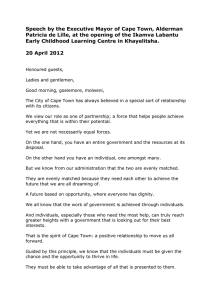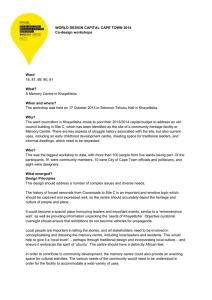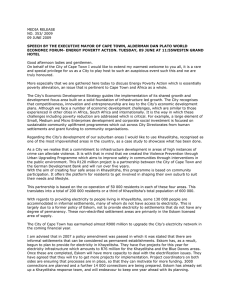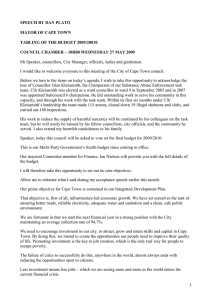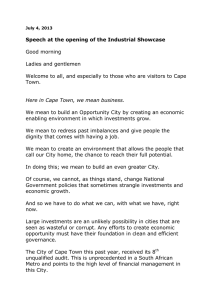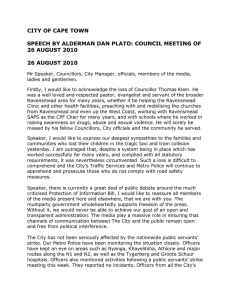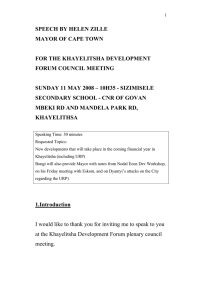WORLD DESIGN CAPITAL CAPE TOWN 2014 Co Design Workshops
advertisement
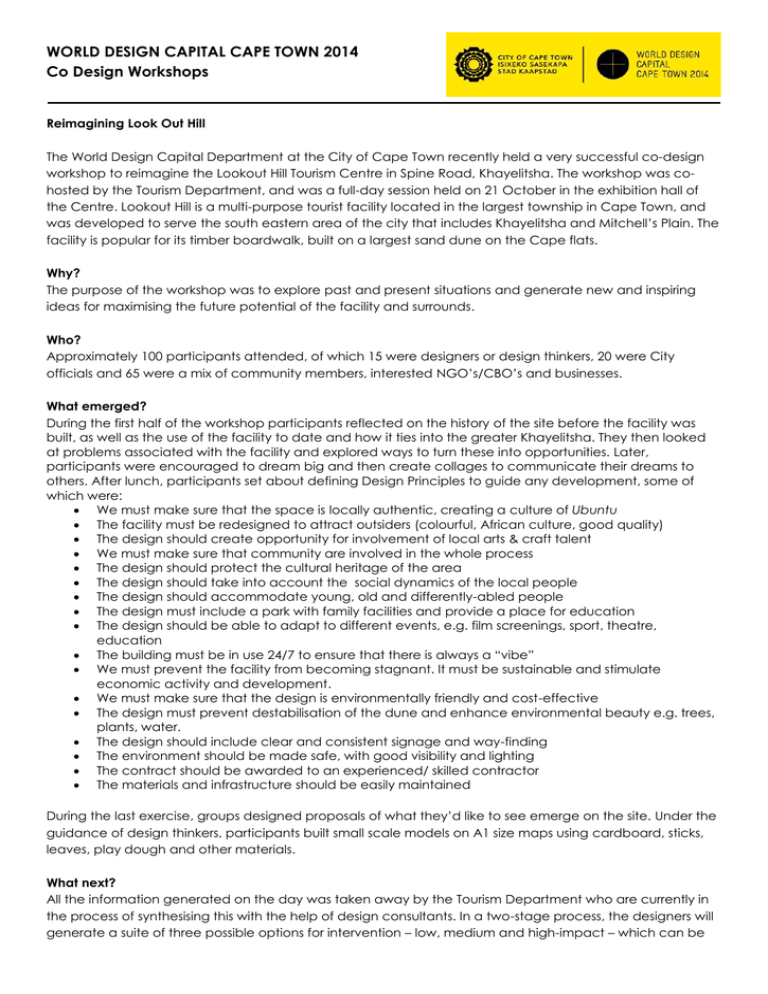
WORLD DESIGN CAPITAL CAPE TOWN 2014 Co Design Workshops Reimagining Look Out Hill The World Design Capital Department at the City of Cape Town recently held a very successful co-design workshop to reimagine the Lookout Hill Tourism Centre in Spine Road, Khayelitsha. The workshop was cohosted by the Tourism Department, and was a full-day session held on 21 October in the exhibition hall of the Centre. Lookout Hill is a multi-purpose tourist facility located in the largest township in Cape Town, and was developed to serve the south eastern area of the city that includes Khayelitsha and Mitchell’s Plain. The facility is popular for its timber boardwalk, built on a largest sand dune on the Cape flats. Why? The purpose of the workshop was to explore past and present situations and generate new and inspiring ideas for maximising the future potential of the facility and surrounds. Who? Approximately 100 participants attended, of which 15 were designers or design thinkers, 20 were City officials and 65 were a mix of community members, interested NGO’s/CBO’s and businesses. What emerged? During the first half of the workshop participants reflected on the history of the site before the facility was built, as well as the use of the facility to date and how it ties into the greater Khayelitsha. They then looked at problems associated with the facility and explored ways to turn these into opportunities. Later, participants were encouraged to dream big and then create collages to communicate their dreams to others. After lunch, participants set about defining Design Principles to guide any development, some of which were: We must make sure that the space is locally authentic, creating a culture of Ubuntu The facility must be redesigned to attract outsiders (colourful, African culture, good quality) The design should create opportunity for involvement of local arts & craft talent We must make sure that community are involved in the whole process The design should protect the cultural heritage of the area The design should take into account the social dynamics of the local people The design should accommodate young, old and differently-abled people The design must include a park with family facilities and provide a place for education The design should be able to adapt to different events, e.g. film screenings, sport, theatre, education The building must be in use 24/7 to ensure that there is always a “vibe” We must prevent the facility from becoming stagnant. It must be sustainable and stimulate economic activity and development. We must make sure that the design is environmentally friendly and cost-effective The design must prevent destabilisation of the dune and enhance environmental beauty e.g. trees, plants, water. The design should include clear and consistent signage and way-finding The environment should be made safe, with good visibility and lighting The contract should be awarded to an experienced/ skilled contractor The materials and infrastructure should be easily maintained During the last exercise, groups designed proposals of what they’d like to see emerge on the site. Under the guidance of design thinkers, participants built small scale models on A1 size maps using cardboard, sticks, leaves, play dough and other materials. What next? All the information generated on the day was taken away by the Tourism Department who are currently in the process of synthesising this with the help of design consultants. In a two-stage process, the designers will generate a suite of three possible options for intervention – low, medium and high-impact – which can be provisionally costed and presented back to decision-makers to guide the spending of current available funding and feed into plans for the upgrade of the facility going forward.




